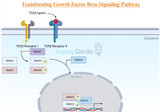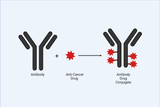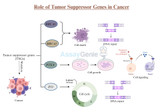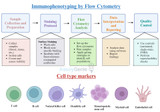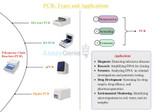Blog
AI Abstract Generator
Revolutionizing Research with AI Abstract Generator Explore how GPT can help in generating scientific abstracts based on figure legends and data. Discover the potential of AI in scientific literature.
window.SHOGUN_IMAGE_V2_ELEMENTS = window.SHOGUN_IMAGE_V2_ELEMENTS || new Array();
window.SHOGUN_IMAGE_V2_ELEMENTS.push({ uuid: 's-4e5ca018-4e14-4841-83e7-262611034802' })
window.SHOGUN_IMAGE_V2_ELEMENTS = window.SHOGUN_IMAGE_V2_ELEMENTS || new Array();
window.SHOGUN_IMAGE_V2_ELEMENTS.push({ uuid: 's-544e2b54-75c1-4b0c-a3ae-8ed4d3e1f80d' })
AI Abstract Generator in Action, example of an abstract in PNAS and a version
…
20th Nov 2023
Deciphering the Intricacies of TGF-Beta Signaling Pathway
Transforming Growth Factor-Beta (TGF-β) signaling pathway plays a pivotal role in orchestrating various cellular processes, ranging from embryonic development to tissue homeostasis and immune response modulation. This intricate pathway is crucial for maintaining cellular balance, and dysregulation can contribute to a myriad of diseases, including cancer, fibrosis, and immune disorders. In this article, we delve into the key components and mechanisms that characterize the TGF-β signaling pathway. Key Components of TGF-Beta Signaling Pathway: TGF-β Ligands: The TGF-β family comprises multifunctional cytokines, with TGF-β1, TGF-β2, and TGF-β3 being
…
24th Aug 2023
Neurofilament Light chain (NEFL) as a biomarker for neuronal damage
Delve into the pivotal role of Neurofilament Light chain (NEFL) in neuron structure and its emerging importance as a biomarker for various neurodegenerative diseases, offering insights into disease progression and treatment monitoring. Key Takeaways: Explore the significance of Neurofilament Light chain (NEFL) as a biomarker for neuronal damage and its role in neurodegenerative diseases. Understand NEFL's function in the neuronal cytoskeleton, transport mechanisms, and post-translational modifications. Discover NEFL's involvement in conditions like Alzheimer’s, ALS, Huntington’s disease, and its potential as a diagnostic tool. Neurofilament Light Cha
…
24th Aug 2023
Positive Control vs Negative Control
T cell activation is a crucial process in the immune response, playing a pivotal role in how the body responds to pathogens and maintains immune homeostasis. This intricate process involves several key stages and molecules, each contributing to the effective functioning of T cells in the immune system. Understanding the Basics of T Cell Activation Direct conjugation involves the direct covalent attachment of the molecule to the antibody. This method is straightforward but requires careful control of reaction conditions to ensure specificity and retain antibody functionality. Indirect Conjugation Indirect conjugation uses a two-step process. Initially, a reactive group is
…
24th Aug 2023
Antibody Conjugation: Techniques and Applications
Antibody conjugation is a pivotal technique in biomedical research and diagnostic applications. This process involves the covalent attachment of a molecule, such as a drug, toxin, enzyme, or fluorescent dye, to an antibody. The specificity of antibodies to their antigens makes antibody conjugation a powerful tool for targeted delivery in therapeutic contexts and for specific detection in diagnostic assays.
window.SHOGUN_IMAGE_V2_ELEMENTS = window.SHOGUN_IMAGE_V2_ELEMENTS || new Array();
window.SHOGUN_IMAGE_V2_ELEMENTS.push({ uuid: 's-244b29f5-4261-4ef7-974d-e802c13cdca5' })
Overview of Antibody Conjugation Techniques Direc
…
24th Aug 2023
Understanding the Gut-Brain Axis
The gut-brain axis, a dynamic bi-directional communication system linking the gastrointestinal (GI) tract with the central nervous system (CNS), has emerged as a focal point in scientific research. This intricate network underscores the interconnectedness of physiological processes, revealing how the gut microbiota interfaces with cognitive functions. Beyond its conventional digestive role, the gut plays a pivotal role in shaping neurological processes, emotions, and behavior. Through neural pathways, hormonal signaling, and immune mediators, the gut and brain engage in a continuous dialogue, unraveling a previously unexplored dimension of human physiology and its potential
…
24th Aug 2023
The Role of Tumor Suppressor Genes in Cancer: Knudson Hypothesis & Oncogenes
The focus of this article is Tumor Suppressor Genes. There are various different types of tumor suppressor genes, with BRCA being one of the most popular. The role of Tumor Suppressor Genes in Cancer, Oncogenes and Knudson Hypothesis are also discussed. Key Takeaways Tumor suppressor genes help prevent tumor formation by controlling cell growth. Mutations in these genes can lead to cancer by disrupting their normal functions. Examples include p53, BRCA1, BRCA2, and PTEN. The Knudson Two-Hit Hypothesis explains how mutations in these genes can lead to cancer. Understanding tumor suppressor genes aids in developing cancer treatments. What are Tumor Suppressor Gene
…
24th Aug 2023
Xeroderma pigmentosum: Causes, Inheritance, Treatment and Diagnosis
What is Xeroderma Pigmentosum? Xeroderma pigmentosum (XP) also known De Sanctis-Cacchione syndrome is a rare genetic disorder that affects the skin, eyes and central nervous system. It is caused by a defect in the Xeroderma pigmentosum gene, which results in an inability to repair DNA damage caused by ultraviolet light. This can lead to a wide range of symptoms, including sunburns, freckles, skin cancer and neurological problems. XP is inherited in an autosomal recessive manner. Till date about 8 inherited forms of Xeroderma pigmentosum has been identified XP-A to XP-G. Diagnosis of Xeroderma pigmentosum can be difficult, as there is no single definitive test. A combination of test
…
23rd Aug 2023
Antibody Structure: Overview & Insights
Antibody Structure
Antibody Structure, Functions & Isotypes IgG, IgA, IgE, IgM, IgD
window.SHOGUN_IMAGE_ELEMENTS = window.SHOGUN_IMAGE_ELEMENTS || new Array();
window.SHOGUN_IMAGE_ELEMENTS.push({ hoverImage: '', uuid: 's-f48dc466-ae8e-404f-842f-cda508fd128a' })
…
23rd Aug 2023
Immunophenotyping by Flow Cytometry and Cell Type Markers
Immunophenotyping by Flow Cytometry Immunophenotyping is a technique used in the field of immunology and cell biology to identify and classify cells based on the specific proteins or molecules found on their surfaces, known as cell surface markers or antigens. These markers provide valuable information about the type, state, and characteristics of individual cells within a larger population. Immunophenotyping is particularly important in fields such as immunology, hematology, oncology, and infectious diseases, where understanding cell populations and their properties is crucial. The primary tool used for immunophenotyping is flow cytometry, although other methods like immu
…
23rd Aug 2023
PCR : Types and Applications
PCR stands as a cornerstone in molecular biology, enabling scientists to magnify and analyze fragments of DNA with incredible precision. In this blog, we'll embark on understanding of PCR – from its fundamental principles to the diverse techniques that have revolutionized research, diagnostics, and beyond. Key Takeaways PCR is a pivotal technique for DNA amplification, crucial in research, diagnostics, and forensics. Variants like Hot Start PCR, RT-PCR, and qPCR enhance specificity, analyze RNA, and quantify nucleic acids. Advances like High Fidelity Polymerase and Digital PCR offer precision in detecting mutations and low-abundance genes. Table of Content
…
23rd Aug 2023
Oxidative Stress: Causes, Biomarkers & Disease
Oxidative Stress Definition
Oxidative stress is a condition that results when the body produces or consumes more reactive oxygen species (ROS) than it can neutralize. ROS are unstable molecules that can damage cells, proteins, and DNA. Oxidative stress has been implicated in a wide range of diseases, including heart disease, cancer, Alzheimer's disease, and Parkinson's disease. In this article, we will discuss oxidative stress and explore its role in disease. We will also look at some of the most common oxidative stress markers.
Oxidants and reductants can be formed in cells by losing or gaining a single electron, which makes them oxidizing or reducing age
…
23rd Aug 2023
A Comprehensive Overview of Cell Death
Cell death is an essential aspect of cellular biology that plays a crucial role in development, homeostasis, and disease. In this blog, we try to focus on mechanisms and various types of cell death, shedding light on the scientific underpinnings of apoptosis, necrosis, and regulated necrosis variants.
Table of Contents
Jump to a section:
- Apoptosis
- How to Measure Apoptosis
- Necrosis
- How to Measure Necrosis
- Types of Regulated Necrosis
- How to Measure Necroptosis
- How to Measure Pyroptosis
.nav__list {
list-style: none;
}
.nav__list a{
font-family: Poppins;
font-size: 18px;
colo
…
23rd Aug 2023
Leukocytes : Basics to Diseases
Only 1% of our blood is made up of white blood cells, but they have a significant impact. Alternatively referred to as leukocytes, white blood cells. We are shielded from disease and illness by them. This blog is an overview of leukocytes including their function, development, types, location and disease.
Table of Contents
Jump to a section:
- Types of Leukocytes
- Production/Development
- Location
- Stimulation
- Function
- Leukocytes and Disease
.nav__list {
list-style: none;
}
.nav__list a{
font-family: Poppins;
font-size: 18px;
color: #29aae1;
}
.nav__list li{
margin-bo
…
22nd Aug 2023
Cystic Fibrosis: Causes, Inheritance, Treatment and Diagnosis
What is Cystic Fibrosis?
Cystic fibrosis (CF) is a genetic disorder that impairs the body's ability to produce sweat and thick mucus. CF causes mucus to build up in the lungs. This mucus clogc the lungs, preventing them from functioning properly. CF can lead to infection, breathing problems and also affect digestion and reproduction. Cystic fibrosis is the most prevalent fatal genetic disease in the United States, affecting about 30,000 Americans. There is currently no cure for cystic fibrosis, but there are several therapies that may help to alleviate symptoms. CF patients are at a higher risk of developing other health problems, such as liver disease, lung
…
22nd Aug 2023
The role of IFN gamma in inflammation, cancer and autoimmune disease
Interferons are key cytokines in the immune system, crucial for combating viral and bacterial infections, with significant roles in both innate and adaptive immunity responses. Key Takeaways Interferons (IFNs) are crucial cytokines in immune responses against viral and bacterial challenges. There are two main types: Type I (IFN-alpha and IFN-beta) and Type II (IFN-gamma), each with unique roles and receptor interactions. IFN-gamma, a Type II interferon, is pivotal in innate and adaptive immunity, produced mainly by T cells and NK cells. What are Interferons? Interferons (IFN) are a family of cytokines which, upon secretion, play a central role in mediating the innate an
…
22nd Aug 2023
The Lenti Viral Vector System: A New Way to Deliver Genetic Therapies
A new way to deliver genetic therapies is making waves in the medical world. The lenti virus vector system has been shown to be more effective than traditional methods of gene therapy delivery. This system uses a virus to carry the therapeutic genes into the cells of the patient's body. Researchers have found that this method results in fewer side effects and higher success rates. In this blog post, we will discuss the lenti virus vector system and its benefits for patients with genetic disorders.
Lentiviruses
The
…
18th Aug 2023
Characteristics of scaffold protein
Scaffold Proteins Environmental stimuli result in different biological responses including cell growth, proliferation or apoptosis. How cells translate specific stimuli into a specific cellular response is not well understood. Scaffold proteins are evolutionarily conserved proteins that play important roles in coordinating signalling events in eukaryotic cells. These proteins, conserved through evolution, serve as essential organizers, helping cells translate external cues into specific actions. This blog post delves into the practical world of scaffold proteins, exploring their fundamental functions and shedding light on how they influence cellular signaling pathways. Key T
…
18th Aug 2023
JAK-STAT Signalling and Cytokines: The What, How, and Why
In the intricate landscape of cellular communication, lies a sophisticated system known as JAK-STAT signaling. JAK-STAT stands for Janus kinase's and signals transducer and activator of transcription proteins This cellular dialogue plays a vital role in relaying messages between cells, ensuring our body responds accurately to a myriad of signals. Think of cytokines as molecular couriers in this intricate conversation. These specialized couriers bind to specific cell receptors, triggering a series of events that culminate in the activation of specific genes. These activa
…
16th Aug 2023
CXCL16 – Review
CXCL16
CXCL16, a unique member of the CXC chemokine family, stands at the crossroads of immune modulation and vascular biology. Initially discovered as a chemokine, CXCL16 operates beyond its chemotactic role by serving as a transmembrane protein that can bind to its receptor, CXCR6. This dual functionality endows CXCL16 with the ability to regulate immune cell trafficking, particularly those expressing CXCR6, and to participate in diverse physiological processes such as inflammation, atherosclerosis, and tissue repair. CXCL16's intriguing capacity to bridge immune responses with vascular dynamics underscores its significance as a multifaceted player
…
15th Aug 2023
CXC Chemokine Family
In the realm of immunology, CXCL chemokines emerge as fascinating conductors. These small proteins, marked by their CXC motif, wield considerable influence over our immune responses and a range of physiological processes. Imagine them as precise guides, steering immune cells with accuracy. Yet, their contributions expand further – they also play a pivotal role in tissue repair and hold promise for novel therapies. Embark on this scientific journey as we delve into the captivating world of CXCL chemokines,
{
"@context": "https://schema.org",
"@type": "Article",
"mainEntityOfPage": {
"@type": "WebPage",
"@id": "https://www.assaygenie.com/blog/cxc-chemokine-fami
…
15th Aug 2023
Mechanisms of HIV persistence during HAART
HIV Virus: Replication Cycle and Pathogenesis in absence of HAART
The human immunodeficiency virus (HIV) is a formidable pathogen that has posed a significant global health challenge for decades. Known for its complex replication cycle and ability to evade the immune system, HIV leads to acquired immunodeficiency syndrome (AIDS) if left untreated. Highly Active Antiretroviral Therapy (HAART) has revolutionized the management of HIV, significantly improving the quality of life and life expectancy of individuals living with the virus. However, to fully appreciate the impact of HAART, it's essential to delve into the intricacies of the HIV replication cycle and
…
15th Aug 2023
Autophagy in Focus: Molecular Mechanisms and Functional Insights
Autophagy, a fundamental cellular process, plays an indispensable role in maintaining cellular homeostasis and ensuring the efficient recycling of cellular components. Through this process, cells can adapt to various stressors, ensuring their survival and contributing to overall organismal health. In this blog, we focus on the multifaceted world of autophagy, unraveling its molecular intricacies and understanding its critical significance in cellular physiology and disease prevention.
Table of Contents
Jump to a section:
- Cellular Mechanisms
- Types of Autophagy
- Pathway and Regulation
- Significance and Applicatio
…
15th Aug 2023
Toll-like Receptors: Gatekeepers of Immune Recognition and Response
What are Toll Like Receptors?
Toll-like receptors (TLRs) are a class of proteins that play a crucial role in the immune system's defense against microbial invaders. These transmembrane receptors are found on various immune cells, including macrophages, dendritic cells, and B cells, as well as non-immune cells like epithelial cells. TLRs are specialized in recognizing specific molecular patterns associated with pathogens, known as pathogen-associated molecular patterns (PAMPs). By detecting the presence of PAMPs, TLRs trigger a cascade of immune responses that help eliminate the pathogens and initiate an appropriate immune defense.
windo
…
11th Aug 2023


